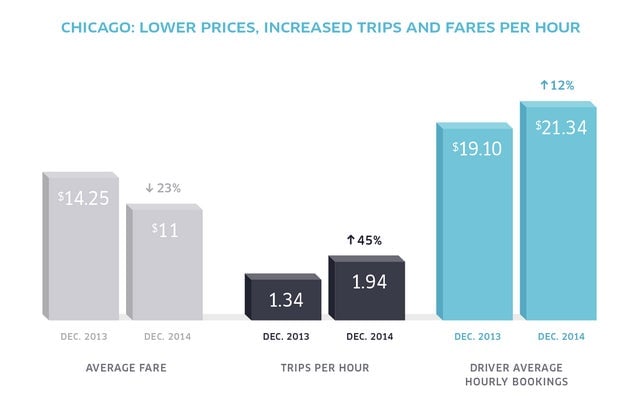Can Uber offer low fares and still pay drivers enough?
Yesterday, Uber announced that it would cut fares in 48 US cities, while still guaranteeing wages for its drivers. It’s a sign of the company’s confidence that it can do what low-price providers in any business hope to do: undercut the competition and make it up on volume.


Yesterday, Uber announced that it would cut fares in 48 US cities, while still guaranteeing wages for its drivers. It’s a sign of the company’s confidence that it can do what low-price providers in any business hope to do: undercut the competition and make it up on volume.
Even as it seeks to beat traditional taxi and car services, as well as rival startup dispatchers like Lyft, on price, Uber needs to pay its drivers enough that they stick with the platform. Meanwhile, the company’s sky-high $40 billion value depends on taking a significant cut of each fare, and both of those dynamics put pressure on its takings.
That inherent conflict has driven many of Uber’s most controversial decisions, including surge pricing—witness the outrage at the increase in Uber fares during a hostage crisis in Sydney— and cuts in fares that have led to driver protests.
But the company says it has been able to have its cake and eat it, too, thanks to the growth in demand spurred by the lower prices. It reports that in New York and now Chicago, growing ridership has allowed the driver’s gross take to grow while fares have fallen, although the company’s history of cherry-picking wage stats should encourage you to take this news with a sizable grain of salt:

Uber’s ability to sustain and ultimately win its price war depends on threading this needle until it controls as much of the ride market share as it can. Will that happen if, as some analysts say, it’s burning through money on under-priced rides? So far, yes—but there’s only so many fares a single driver can deliver in an hour. At some point, there won’t be room for marginal increases in driver earnings.
Meanwhile, competitor Lyft is joining Uber in this race to the bottom, while Gett, another car-dispatch platform, has said it will pay drivers double what Lyft and Uber are offering.
And then there’s the trouble with regulators, which is playing out in jurisdictions around the globe. A bellwether on this is New York, where five of Uber’s six local dispatch bases were suspended this week, after the company refused to share ride data with the New York City Taxi & Limousine Commission.
If the regulatory standoffs lead to a significant enough disruption in service, and not a mere public relations hit (the company has learned how to easily weather those) then it may not take long for its more well-behaved competitors to pounce, potentially eating away at Uber’s advantage in consumer awareness. But Uber didn’t get where it is today by being well-behaved.